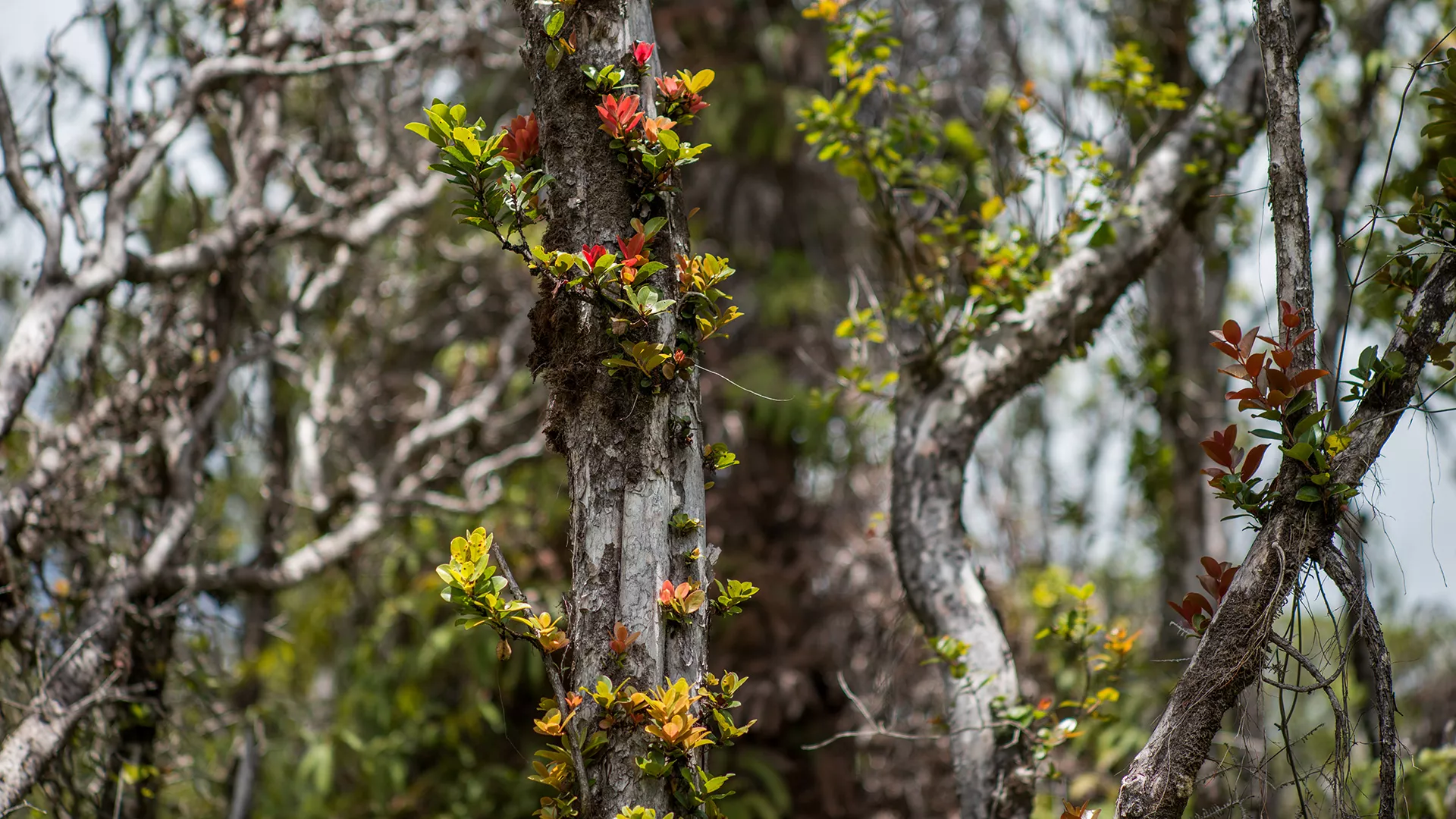 |
5 Ways to Experience Hawaiʻi Grown and Raised Eats
When it comes to food, dining out and agriculture in Hawaiʻi, the words “locally grown-and-raised” hold much weight.
With more than 85 percent of the food Hawaiʻi residents consume brought in by air or ocean transport, the food descriptors “Hawai‘i-grown” and “Hawaii-raised” – at least among progressive chefs and diners here – have less to do with keeping up with farm-to-table culinary trends than supporting Hawaiʻi’s continuing evolution toward food self-sustainability.
When Hawaiʻi diners open a restaurant menu and find on it asparagus and broccoli grown in Waialua on Oʻahu, blueberries from Kula on Maui, or island of Hawaii-raised mushrooms and beef, it’s significant. It’s about chefs and residents being able to craft dishes utilizing produce, meats and seafood procured at peak flavor. It’s about buying and supporting local.
In short, it’s a point of pride.
The growth in recent years of Hawaiʻi chef-farmer partnerships, farmers markets, small farms growing specialized produce, and grocery stores stocking as much local product as they can procure has revolutionized modern Hawaiʻi cuisine. These days, if an ingredient can be grown or ranched commercially, chances are we’re growing and ranching it here to some extent or, at the very least, experimenting with ways to do so. It all adds up to being a very positive thing not only for Hawaiʻi farmers and chefs, but residents and visitors with an appreciation for culinary creativity, fresh food procured close to home, and eating well.
Visit the Islands and you’ll find so many more places than in years past to buy Hawaiʻi grown-and-raised, taste Hawaiʻi grown-and-raised, and so many farmers markets, restaurants and grocery markets where you can do both.
Intrigued? Here are 5 ways you can experience the best of Hawaiʻi grown-and-raised produce, meats and seafood on your next visit to the Islands.
Go on a farm tour
You’ll find the best tours of Hawaiʻi farms share not just a taste of what each grows and raises, but insight into the research, work and production processes that go into bringing their products to consumers and chefs, and the importance of their work to Hawaiʻi’s food sustainability future. Tasting-wise? Depending on the farm and island you’re visiting, you can sample everything from coffee and chocolate, to pineapple, beef, oysters, vanilla, herbs and all manner of vegetables and tropical fruit.
Check out a neighborhood farmers market
Chances are you won’t have to do much searching to find one (or more) of the many interesting and bustling weekly (sometimes daily) farmers markets in towns and neighborhoods throughout the Islands, including big city Honolulu. Many of these markets – especially ones supported by the Hawaiʻi Farm Bureau – are specifically focused on carrying local. Collectively, they’re also among the best places to easily taste local produce whether you’re cooking at home or looking to chow down great eats on the spot.
Dine out a lot, and all over
That’s because the diversity of Hawaiʻi’s farm-, ranch- and ocean-to-table ingredients truly never travels far to get to your plate. With our most creative chefs in such close proximity to farmers, ranchers and fishermen, much of the Islands’ locally grown-and-raised ingredients arrive in restaurant kitchens at peak freshness and flavor. From fresh-caught Kauaʻi amaebi and pasture-raised Oʻahu chicken to morning-picked, dinner-served island of Hawai‘i-grown lettuces and much more, always look for local on your menu.
Do some food shopping
More Hawaiʻi supermarkets and specialty markets than ever are making stocking as much Hawaii-crafted food products and local produce, meats and seafood as they can get their hands on a mission of their business. Visit select Hawaiʻi grocery retailers and you’ll find everything from local-caught fish and island-raised beef, to produce such as heirloom tomatoes, strawberries, hearts of palm, passion fruit, kale, kalo (taro), and Hawaii-crafted beers, spirits, juices, soft drinks, teas, cheeses, charcuterie and much more.
Bring an empty stomach to one of our food and agricultural festivals
No two food or agricultural festivals in Hawaiʻi are alike, and none are like you’ve experienced anywhere else. The Maui County Ag Festival celebrates the farmers, food producers and chefs of the island with eat-on-the-spot and take-home local eats. The Hawaiʻi Food and Wine Festival has top Hawaiʻi and global chefs spotlighting local ingredients, dishes and cooking traditions. A Taste of the Hawaiian Range praises the island of Hawaiʻi’s ranching and farming bounty with a carnivore’s dream menu. The Kona Coffee Cultural Festival and Kaʻū Coffee Festival are all about sharing some of the state’s most award-winning java. And trust us, this list is just a start.
SEE “SUSTAINABILITY”: Watch Hawaiian cultural practitioner Greg Solatorio talk about the role he has taken on as caretaker of the history and culture of his family’s ancestral lands in Molokaʻi’s Hālawa Valley. Solatorio discusses how his father – himself a Hawaiian cultural practitioner – immersed him from a young age in the knowledge and skills of living sustainably that were practiced by his ancestors in Hālawa, and taught him the importance of sharing its culture and history with others. Click here to watch the video. |
 |

